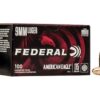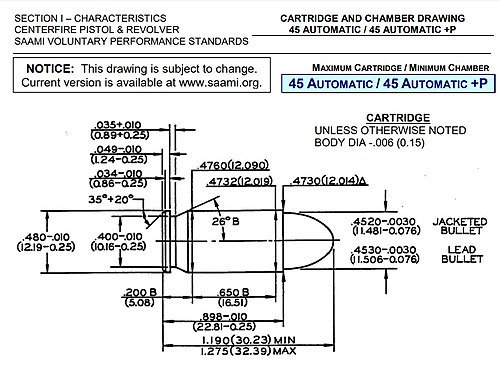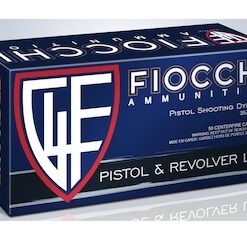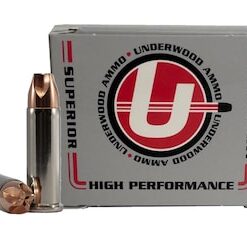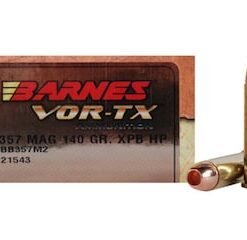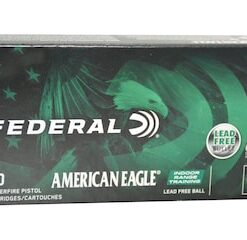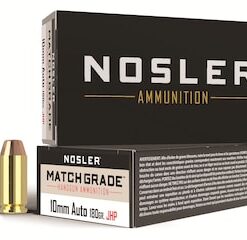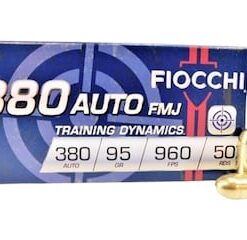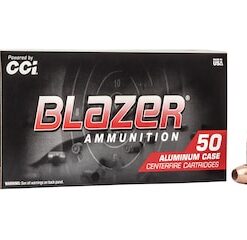45 ACP AMMO – 230 GRAIN TMJ – SPEER LAWMAN – 1000 ROUNDS
$670 $490
Specifications
Product Information
| MANUFACTURER | Speer |
|---|---|
| CONDITION | New |
| BULLET WEIGHT | 230 Grain |
| BULLET TYPE | Total Metal Jacket (TMJ) |
| AMMO CASING | Brass |
| QUANTITY | 1,000 |
| AMMO CALIBER | .45 ACP ammo (Auto) |
| MANUFACTURER SKU | 53653 |
| PRIMER TYPE | Boxer |
| MUZZLE VELOCITY (FPS) | 830 |
| UPC BARCODE | 10076683536539 |
| COST PER ROUND | $0.54 per round |
45 ACP ammo: Speer® brought sport shooters and law enforcement the excellence of Lawman over 35 years ago. Back in 1968, the line included various calibers of centerfire handgun ammunition, and quickly earned a reputation as a high-performance and reliable product.
Lawman is attractively priced, and the cases are reloadable with clean-burning propellants and reliable CCI primers to complete the package.
Note that the total metal jacket (TMJ) is essentially the same as a full metal jacket (FMJ).
Muzzle Velocity: 830 fps
Muzzle Energy: 352 ft-lbs
| MANUFACTURER | Speer |
|---|---|
| CONDITION | New |
| BULLET WEIGHT | 230 Grain |
| BULLET TYPE | Total Metal Jacket (TMJ) |
| AMMO CASING | Brass |
| QUANTITY | 1,000 |
| AMMO CALIBER | .45 ACP ammo (Auto) |
| MANUFACTURER SKU | 53653 |
| PRIMER TYPE | Boxer |
| MUZZLE VELOCITY (FPS) | 830 |
| UPC BARCODE | 10076683536539 |
| COST PER ROUND | 62.5¢ per round |
The 45 ACP AMMO has 1.62 mL (25 grains H2O) cartridge case capacity.
45 ACP AMMO maximum C.I.P. cartridge dimensions.[11] All sizes in millimeters (mm).
SAAMI specifications for 45 ACP AMMO. All dimensions are in inches (millimeter)
The common rifling twist rate for this cartridge is 1 in 16 in (406 mm), 6 grooves, Ø lands = .442″ (11.23 mm), Ø grooves = 45″ (11.43 mm), land width = .147″ (3.73 mm) and the primer type is large pistol. The cartridge headspaces on the mouth of the case at the L3 datum reference.[13]
According to Commission Internationale Permanente pour l’Epreuve des Armes à Feu Portatives rulings, the 45 ACP cartridge case can handle up to 131 MPa (19,000 psi) Pmax piezo pressure. In CIP-regulated countries every pistol cartridge combination has to be proofed at 130% of this maximum CIP pressure to certify for sale to consumers. This means that 45 ACP AMMO chambered arms in C.I.P. regulated countries are currently (2016) proof tested at 170 MPa (25,000 psi) PE piezo pressure.[11]
The SAAMI pressure limit for the 45 ACP AMMO is set at 21,000 psi (144.79 MPa) piezo pressure, while the SAAMI pressure limit for the 45 ACP +P is set at 23,000 psi (158.58 MPa), piezo pressure.
The 45 ACP AMMO is an effective combat pistol cartridge. It combines accuracy as well as stopping power for use against human targets, has relatively low muzzle blast and flash, and it produces a stout, but manageable recoil in handguns (made worse in compact models).
The standard issue, military 45 ACP cartridge contains a 230-grain bullet that travels at approximately 830 feet per second when fired from the government issue M1911A1 pistol, and approximately 950 feet per second fired from the Thompson M1A1 submachine gun. The cartridge comes in various specialty rounds of varying weights and performance levels as well.[2]
The cartridge operates at a relatively low maximum chamber pressure rating of 21,000 psi (145 MPa) (compared to 35,000 psi/241 MPa for 9mm Parabellum and .40 S&W, 37,500 psi/259 MPa for 10mm Auto, 40,000 psi/276 MPa for .357 SIG), which due to a low bolt thrust helps extend service life of weapons in which it is used. Some makers of pistols chambered in 45 ACP AMMO do not certify them to use Plus P ammunition.
In its non-expanding full metal jacket (FMJ) version, the 45 ACP cartridge has a reputation for effectiveness against human targets because of its heavy mass, having the capacity to penetrate tissue deeply, and damage the central nervous system. Its large 11.5mm diameter creates a more substantial permanent wound channel versus smaller calibers, which can lower blood pressure rapidly if critical organs of the circulatory system are hit.
In its expanding hollow point form, it is also particularly effective against human targets. In tests against ballistic gelatin, a 185 grain hollow point traveling at 1,050 feet per second expanded to about .76 inches. This is a significantly large permanent wound cavity for a handgun projectile. For those who follow the energy dump and/or hydrostatic shock theories of wounding ballistics, this is ideal. While slightly decreasing penetration and likewise the chance of hitting a vital organ, a large diameter wound will cause more blood loss. There is also a reduced likelihood of overpenetration, meaning that it is more likely that the projectile will transfer all of its kinetic energy to the intended target, thus more reliably incapacitating them.
Drawbacks for military use include the cartridge’s large size, weight, increased material costs in comparison to the smaller, flatter shooting NATO standard 9×19mm Parabellum cartridge, a cartridge which uses less powder, brass, and lead per round. Standard 9mm NATO ammunition has a more limited armor penetration capability − a deficiency shared with 45 ACP, whose large, slow bullet does not penetrate armor to any great extent. The low muzzle velocity also makes the bullet drop over long ranges, making hits more difficult; however, it is important to note that the vast majority of self-defense situations involving handguns typically occur at close ranges.
After two years of testing, one of the final FBI comments was that services that adopt (or stay with) .40 S&W or 45 ACP AMMO did so at the risk of increased recoil and a possible reduction in accuracy as 9 x 19mm with premium quality ammunition had nearly exactly the same performance. A factor rated by the recent FBI testing was accuracy and time to recover. The 45 ACP handguns ranked last, largely due to increased recoil.
Because of its large diameter and straight-walled design, the 45 ACP AMMO geometry is the highest power-per-pressure repeating production round in existence. This is because of the higher powers achievable with 45 ACP +P, 45 ACP ammo Super, and 460 Rowland loads. Because of the inherent low pressure of the standard round, however, compensators and brakes have little effect until +P, Super, and Rowland loads are utilized.
USE IN SUPPRESSORS
As standard pressure 45 ACP rounds fired from handguns and submachine guns are inherently subsonic, it is one of the most powerful pistol calibers available for use in suppressed weapons since subsonic rounds are quieter than supersonic rounds. The latter inevitably produce a highly compressed shock wave, audible as a loud “crack”, a small sonic boom, while they travel through the air. Suppressors reduce the audible “report” by slowing and channeling the high speed gas generated by the burning/expanding gunpowder before it exits the muzzle resulting in a muffled “cough”. Suppressors cannot act on a supersonic shock wave continuously generated by a bullet exceeding the 1,087 ft/s (331 m/s) speed of sound at 32 °F (0 °C) ambient cold temperatures, as this shock wave is continuously produced throughout the entire flight path over which the bullet is supersonic, which extends long after it exits the barrel.
The downside to the use of 45 ACP in suppressed weapons is that increasing the diameter of the passage through a suppressor decreases the suppressor’s efficiency; thus, while 45 ACP is among the most powerful suppressed pistol rounds, it is also one of the loudest. Most 45 suppressors must be fired “wet” (with an ablative medium, usually oil or water) to bring sound levels down to “hearing-safe” (under 140 dB, generally).
Related products
Handgun Ammunition
Barnes VOR-TX Ammunition 357 Magnum 140 Grain XPB Hollow Point Lead-Free Box of 20
Handgun Ammunition
Federal American Eagle IRT Ammunition 45 ACP 140 Grain Flat Nose Lead-Free
Handgun Ammunition
Nosler Match Grade Ammunition 10mm Auto 180 Grain Jacketed Hollow Point
Handgun Ammunition
Fiocchi Training Dynamics Ammunition 380 ACP 95 Grain Full Metal Jacket Box of 50



